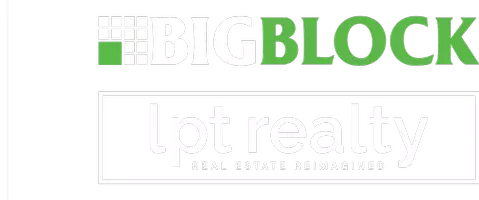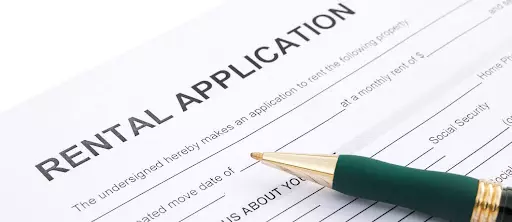Buying a Second Home as an Investment Property: Renting to Short-Term Vacation Renters or Long-Term Tenants

Buying a Second Home as an Investment Property: Renting to Short-Term Vacation Renters or Long-Term Tenants
Secondary homeownership is becoming increasingly popular as more people recognize the potential of real estate as a high-performing asset. Whether you’re considering a second home for occasional personal use or as an investment property, renting it out can be a great way to generate additional income. Here’s a guide to help you understand the ins and outs of renting your home, whether as a short-term vacation rental or to long-term tenants.
1. Short-Term Vacation Rentals
Pros:
Higher Rental Income
- Short-term rentals often generate higher rental income compared to long-term rentals. Vacationers are willing to pay premium rates for short stays, especially during peak seasons.
Flexibility
- Renting your home on a short-term basis allows you to use the property for personal vacations. You can block off dates for your own use and rent it out when you’re not using it.
Tax Benefits
- There can be tax benefits associated with short-term rentals. For example, you may be able to deduct certain expenses related to maintaining and renting out the property. Consult with a tax professional for specific advice.
Cons:
Frequent Turnover
- Short-term rentals require frequent turnover, which means more cleaning, maintenance, and management. You’ll need to ensure the property is in excellent condition for each new guest.
Regulations and Restrictions
- Some cities and homeowners’ associations have strict regulations and restrictions on short-term rentals. Be sure to check local laws and regulations before listing your property.
Variable Income
- Income from short-term rentals can be variable and seasonal. It may be challenging to predict occupancy rates and rental income throughout the year.
Managing a Short-Term Rental:
Listing Your Property
- Create an attractive listing with high-quality photos and detailed descriptions of the property’s features and amenities. Highlight what makes your property unique and appealing to vacationers.
Setting Rates
- Research comparable rentals in the area to set competitive rates. Consider factors such as location, property size, amenities, and peak seasons when determining your pricing.
Marketing and Advertising
- Utilize platforms like Airbnb, Vrbo, and Booking.com to market your property. Leverage social media and local tourism websites to attract potential guests.
Guest Communication
- Maintain open and clear communication with guests before, during, and after their stay. Provide detailed check-in instructions, local recommendations, and be responsive to any questions or concerns.
Cleaning and Maintenance
- Arrange for professional cleaning services between guest stays to ensure the property is spotless. Regular maintenance and prompt repairs are essential to maintaining a high standard.
2. Long-Term Rentals
Pros:
Stable Income
- Long-term rentals provide a stable and predictable income stream. Tenants sign leases for extended periods, typically six months to a year, ensuring consistent rental payments.
Less Turnover
- With long-term rentals, there is less frequent turnover, reducing the need for constant cleaning and marketing. Long-term tenants tend to take better care of the property as it becomes their home.
Simplified Management
- Managing a long-term rental property is generally less time-consuming than managing short-term rentals. You won’t need to deal with frequent guest check-ins and check-outs.
Cons:
Lower Rental Income
- Long-term rentals typically generate lower rental income compared to short-term rentals. The monthly rent is generally lower than the nightly rates charged for vacation rentals.
Potential Tenant Issues
- Finding reliable tenants is crucial for long-term rentals. Problematic tenants can lead to issues such as late payments, property damage, or eviction processes.
Lease Agreements
- Drafting a comprehensive lease agreement that outlines the terms and conditions of the rental is essential. This includes rent amount, payment schedule, maintenance responsibilities, and rules for property use.
Managing a Long-Term Rental:
Screening Tenants
- Conduct thorough tenant screenings, including credit checks, background checks, and reference checks. Ensure you choose responsible tenants who will pay rent on time and take care of the property.
Lease Agreement
- Create a detailed lease agreement that covers all aspects of the rental arrangement. Both parties should review and sign the agreement to ensure mutual understanding and compliance.
Rent Collection
- Set up a reliable system for rent collection, such as direct deposit or an online payment platform. Clearly communicate the payment schedule and any late fees to your tenants.
Property Maintenance
- Regularly inspect the property and address any maintenance issues promptly. Establish a maintenance schedule for routine tasks like HVAC servicing, gutter cleaning, and pest control.
Tenant Communication
- Maintain open and respectful communication with your tenants. Address any concerns or issues they may have and keep them informed about any changes or updates related to the property.
Conclusion
Whether you decide to rent your second home as a short-term vacation rental or to long-term tenants, each option has its advantages and challenges. Short-term rentals can generate higher income but require more frequent management and compliance with regulations. Long-term rentals offer stable income and simplified management but may yield lower rental income. By understanding the ins and outs of each option and implementing best practices for management, you can successfully rent out your second home and make the most of your investment property. Happy renting!
Leave a reply




